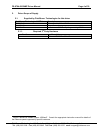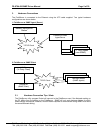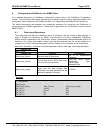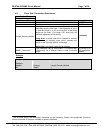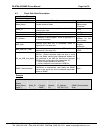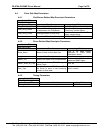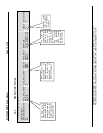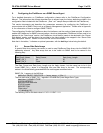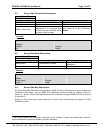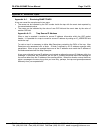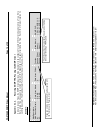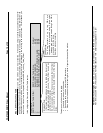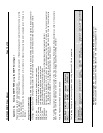
FS-8704-09 SNMP Driver Manual Page 11 of 39
FieldServer Technologies 1991 Tarob Court Milpitas, California 95035 USA Web: www.fieldserver.com
Tel: (408) 262 2299 Fax: (408) 262 9042 Toll Free: (888) 509 1970 email: support@fieldserver.com
5. Configuring the FieldServer as a SNMP Server/Agent
For a detailed discussion on FieldServer configuration, please refer to the FieldServer Configuration
Manual. The information that follows describes how to expand upon the factory defaults provided in the
configuration files included with the FieldServer. (See “.csv” sample files provided with the FieldServer).
This section documents and describes the parameters necessary for configuring the FieldServer to
communicate with a SNMP Client such as a Network Management application. Please refer to Appendix
A: for a discussion of how to configure SNMP TRAPS.
The configuration file tells the FieldServer about its interfaces, and the routing of data required. In order to
enable the FieldServer for SNMP communications, the driver independent FieldServer buffers need to be
declared in the “Data Arrays” section, the FieldServer virtual Node(s) needs to be declared in the “Server
Side Nodes” section, and the data to be provided to the clients needs to be mapped in the “Server Side
Map Descriptors” section. Details on how to do this can be found below.
Note that in the tables, * indicates an optional parameter, with the bold legal value being the default.
5.1. Server Side Data Arrays
A special Data Array naming convention is used to map FieldServer Data Arrays into the SNMP OID
addressing scheme. Any data arrays that are to be visible via SNMP have to be named in the
following way:
Data_Arrays
Data_Array_Name, Data_Format, Data_Array_Length
SNMP_DA_1, Int, 20
SNMP_DA_2, Float, 20
The Data_Format and Data_Array_Length may be freely chosen, but the name has to be in the
format SNMP_DA_x, where x is sequential from one Data Array to the next. The corresponding
entries in the automatically generated MIB file would appear as shown below.
SNMP_DA_1 appears in the MIB thus:
dataArray1 OBJECT IDENTIFIER ::= { snmp_server_v1_00a 1 }
The first data value in SNMP_DA_1 appears in the MIB thus (note Integer Data Type):
dataValue1_0 OBJECT-TYPE
SYNTAX INTEGER
MAX-ACCESS read-write
STATUS current
DESCRIPTION
"Data value."
::= { dataArray1 0 }
The resulting OID for this data value is 1.3.6.1.4.1.6347.1.1.0.




